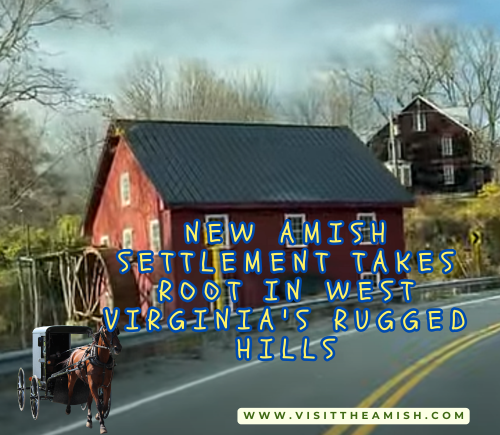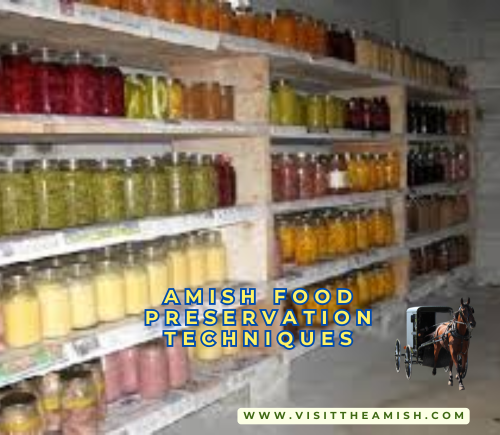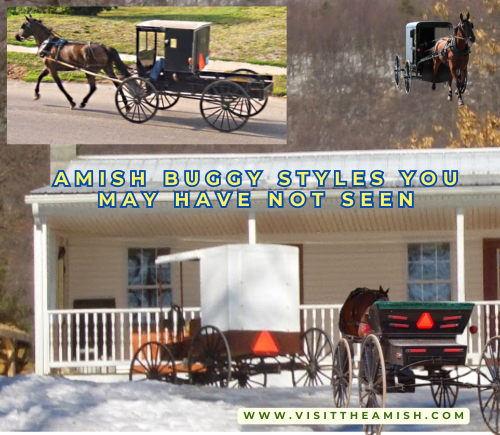New Amish Settlement Takes Root in West Virginia’s Rugged Hills
In a surprising turn of events, a group of Amish families has established a new settlement in the remote hills of Tucker County, West Virginia. The community, which arrived last month, marks the tenth Amish settlement in the state.
The group, consisting of 15 families from Ohio, has purchased several hundred acres of land near the small town of Davis. Local residents have been both curious and welcoming of their new neighbors.
“We’ve never seen anything like this before,” said Sarah Thompson, 62, a lifelong Davis resident. “It’s like stepping back in time, watching them set up their farms with horse-drawn plows.”
The Amish families, led by Bishop Eli Miller, chose West Virginia for its affordable land and relative isolation. “We sought a place where we could practice our faith and way of life without too much interference from the modern world,” Miller explained[1].

Despite the challenging terrain, which is not typically conducive to large-scale farming, the Amish are adapting their agricultural practices. They plan to focus on small-scale vegetable farming, animal husbandry, and craft-based businesses[5].
Local officials are cautiously optimistic about the economic impact of the new settlement. County Commissioner John Baker stated, “We hope their presence will boost our local economy, particularly through tourism and the sale of handmade goods.”
The Amish have already opened a small bakery and variety store, reminiscent of similar establishments in other West Virginia Amish communities[4]. Local resident Mike Johnson, 45, commented, “Their baked goods are out of this world. I never knew I needed Amish donuts in my life until now.”
As with other Amish settlements in West Virginia, this community faces challenges, including adapting to the mountainous terrain and establishing relationships with their “English” neighbors[3]. However, their determination and strong work ethic have impressed many locals.

“They’re up at dawn every day, working hard to build their homes and businesses,” observed Tom Wilson, a nearby farmer. “It’s inspiring to see such dedication.”
While it’s too early to predict the long-term success of this new settlement, the arrival of the Amish has certainly brought a unique change to Tucker County. As West Virginia continues to diversify, this latest addition to the state’s cultural tapestry offers a glimpse into a simpler way of life amidst the complexities of the modern world.
The Amish presence in West Virginia has evolved significantly over the years, with recent growth contrasting earlier limited settlement attempts:
- Historical presence: The first Amish settlement in West Virginia was established in 1850 in Preston County, before West Virginia became a state[2]. This community lasted for 93 years but eventually dwindled and ended in 1943.
- Slow initial growth: For many decades, West Virginia had very few Amish residents despite bordering Pennsylvania and Ohio, the two most Amish-populated states.
- Recent expansion: Since 2010, West Virginia has experienced a significant increase in its Amish population:

- The number of Amish communities has grown from 3 to 9 since 2017, averaging one new settlement per year.
- The Amish population has tripled from around 200 to over 600 people since 2010.
- This growth rate outpaces typical Amish population increases, mainly due to Amish families moving in from other states.
- Current settlements: As of 2024, there are nine Amish communities in West Virginia. The oldest existing settlement, founded in 1996, is located near Letart in Mason County.
- Economic initiatives: Some West Virginia communities have actively encouraged Amish settlement. For example, Barbour County officials have been courting young Amish families from Pennsylvania and Ohio to establish businesses in the area, hoping to boost the local economy and potentially attract tourism.
- Challenges and adaptations: Amish settlers in West Virginia have had to adapt to the state’s mountainous terrain, which is less conducive to traditional large-scale farming. Some communities have focused on small-scale vegetable farming, animal husbandry, and craft-based businesses.
This evolution shows that while Amish settlement in West Virginia was historically limited, recent years have seen a significant increase in Amish presence, driven by both internal growth and migration from other states.
Citations:
[1] https://amishamerica.com/west-virginia-amish/
[2] https://www.ipl.org/essay/The-Amish-Community-A-Short-Story-F3WGALQBGXPV
[3] https://www.onlyinyourstate.com/experiences/virginia/amish-va
[4] https://amishamerica.com/amish-summers-county-west-virginia/
[5] https://www.amish365.com/where-are-the-amish-in-west-virginia/
[6] https://www.idaillinois.org/digital/custom/bySubject
[7] https://www.youtube.com/watch?v=3AcH5dwUoRw

























